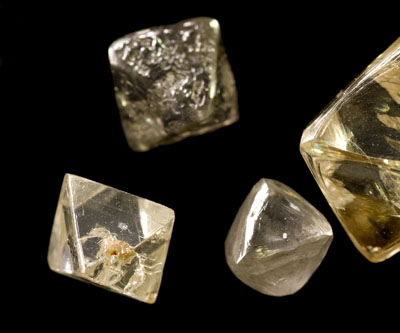Impure diamonds make perfect computers

Diamonds have the potential to act as building blocks for quantum computing.
In an article published in Nature Physics last month, a group of researchers found that the nitrogen vacancy centre in a diamond can be used for quantum memory.
The paper was published by the Center for Spintronics and Quantum Computation, University of California, Santa Barbara, California; and the Department of Physics, University of Konstanz. Researchers named were G. D. Fuchs, P. V. Klimov, D. D. Awschalom
Quantum computers uses quantum mechanics to perform operations much faster than traditional computers, which are based on transitors.
Computers are essentially a large collection of coordinated bits that are either in the on or off state. A quantum computer is composed of quantum bits or qubits, which can have many more states, thus exponentially increasing the computer’s power.
But finding an effective medium for quantum computing has been ellusive, and researchers found that diamonds may be one of the answers.
They wrote the following:
A quantum memory, composed of a long-lived qubit coupled to each processing qubit, is important to building a scalable platform for quantum information science. These two qubits should be connected by a fast and high-fidelity operation to store and retrieve coherent quantum states. Here, we demonstrate a room-temperature quantum memory based on the spin of the nitrogen nucleus intrinsic to each nitrogen–vacancy (NV) centre in diamond.
Geekosystem does a good job of explaining what the reseachers achieved:
What the papers really do is lay out blueprints for what is needed to achieve efficient quantum memory. A magnetic field is applied to split the qubit, the energy state of which is set with a laser pulse. The state can be manipulated with microwaves, and the magnetic field can then be increased to a new value so a radio frequency pulse can then push the state onto the nitrogen nucleus. Increasing the magnetic field further makes the stored state become isolated. In order to retrieve the qubit, the process is simply reversed.
Great! So, that means what? Well, for those among us with no background in quantum mechanics we’re going to have to look at things from an atomic level to figure out how qubits are made from impure diamonds. Basically, it is all about the atomic structure of the diamond’s molecules, and how they interact and can be manipulated.
Quatum computing, as whole, is still in the experimental phase; however, Lockheed Martin is buying the world’s first commmercial quanutm computing system from D-Wave Systems.
Michael McCrae wrote this story. You can contact him at mmccrae@mining.com or on twitter at @michaelmccrae.
More News
{{ commodity.name }}
{{ post.title }}
{{ post.date }}

2 Comments
Mike Guy
All the Cores of the Cosmos are Naturally Occurring Crystal Core Quantum Computers!!!
I do not usually try to “correct” scientific philosophy, but I have to say, even in your own words. if intense Electromagnetic Fields create a cooling effect, which they do, and I have stated this MANY Times, then isn’t it possible (As even CrystalCore states that the Earth is Colder the deeper you get) that the Core of the Planet is actually VERY DENSE, and VERY COLD, the EM Field of Earth COOLS the Core, the Core is not Molten at the extreme depths, and is in fact Crystalline in Nature, just as “Repeating Geometry is the very definition of a Crystal” – The Universe and everything in it is in a repetitive Geometric Structures (ie Crystal) and intense EM Fields actually have a cooling effect, again, Crystal! A Diamond is Extremely compressed Carbon, what do you think happens to Silver, Iron, Gold, and Plutonium at the center of the Core? Almost ZERO Heat and tremendous pressure compresses the Elements into Crystals! The Crystal Cores of the Cosmos are Naturally Occurring Quantum Computers – look up “Crystal Dope-Vacancy Quantum Computer” and understand, at the center of the Core, with the Hierarchy of Elements all forming a Periodic Table/Rainbow, with each Element a layer of the “Egg” with the layers of elements getting denser and denser, and more and more Radioactive and/or Energetic! Radioactive/Energetic Crystals formed up in the Crystal Core creates extremely powerful Crystal Core Quantum Computers, and at the Cores of the Cosmos the Intelligent Infinity is Computed, while the consciousness of the life on the surface is directly tied to the Core itself! The very “Density” of the Life Form is represented within the layers of the Core, 3rd Density literally refers to the Density Layers within the Crystal! As the Density increases, so does the computer power and intelligence – Just like your CPU in your computer, if it is 22nm CPU that is better than 32nm, and if you have one of the newest CPUs on the market, you have a 10nm or 14nm CPU – the Denser the CPU the better – you get it? Crystals For The Win! OMG
computer shuts itself off
Well I have seen this technology first hand and must say I was very impressed.